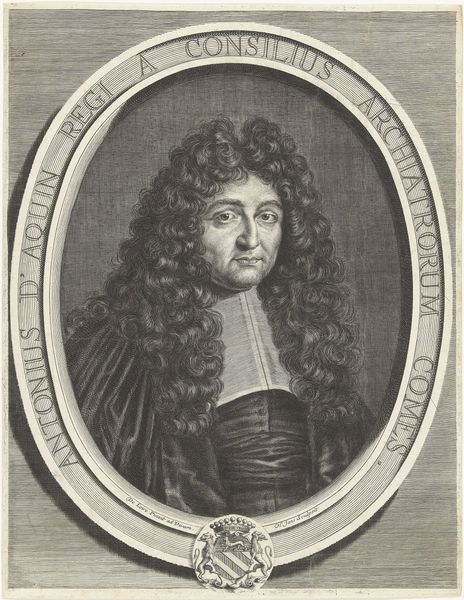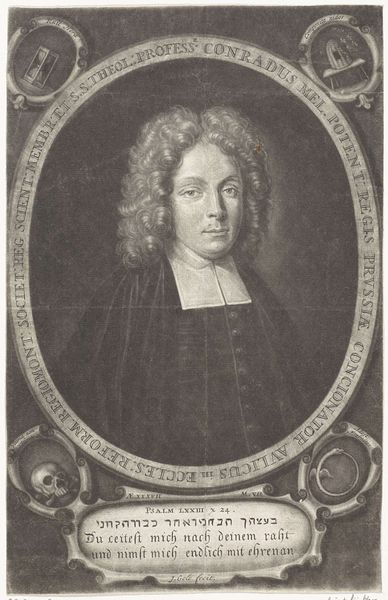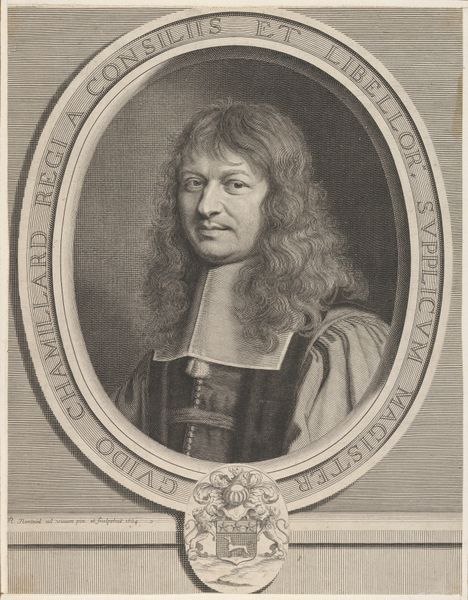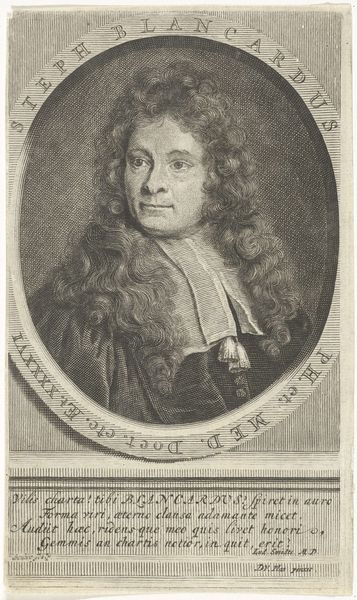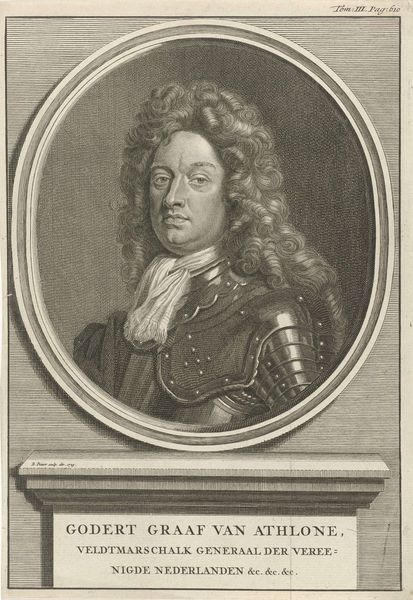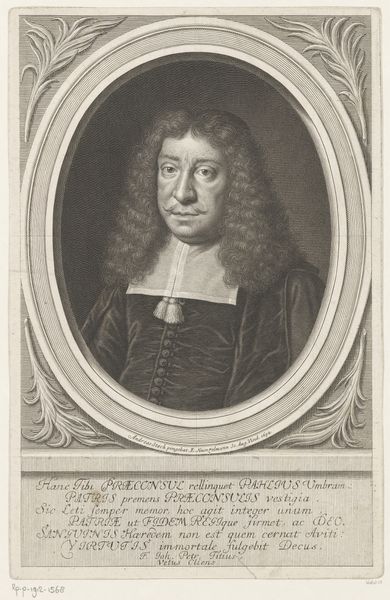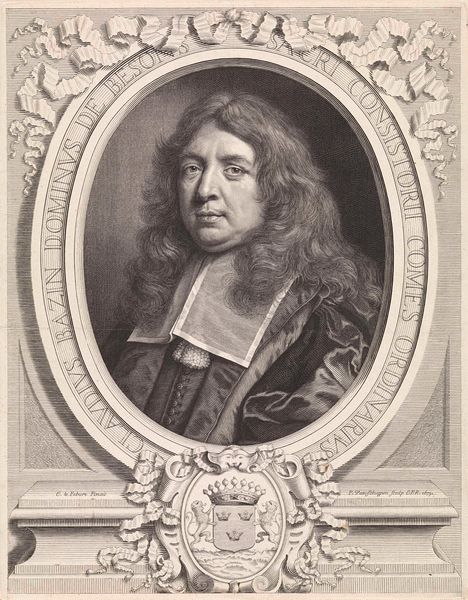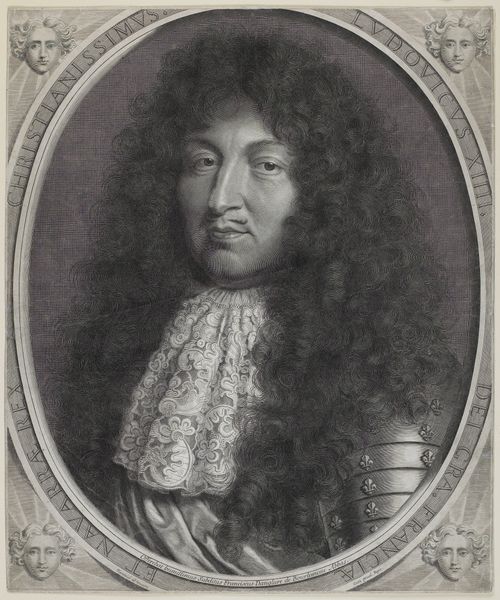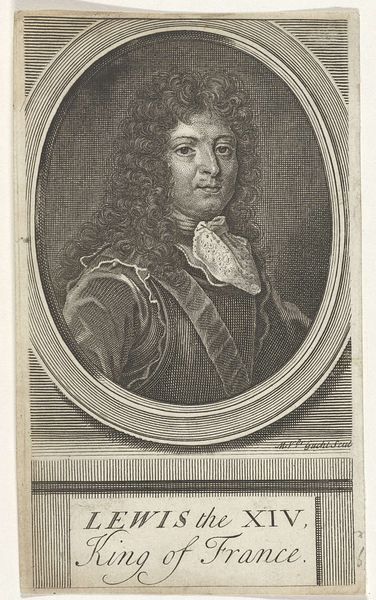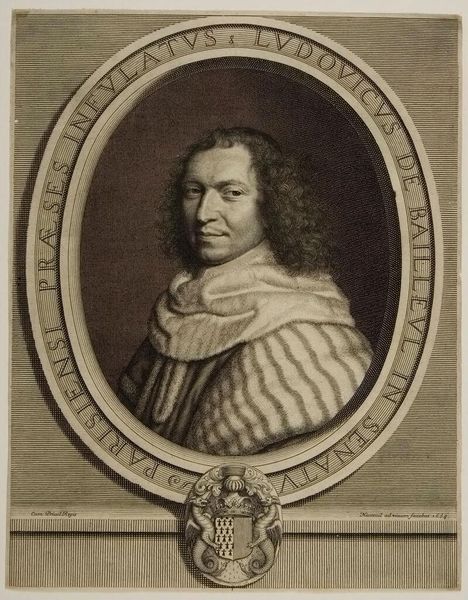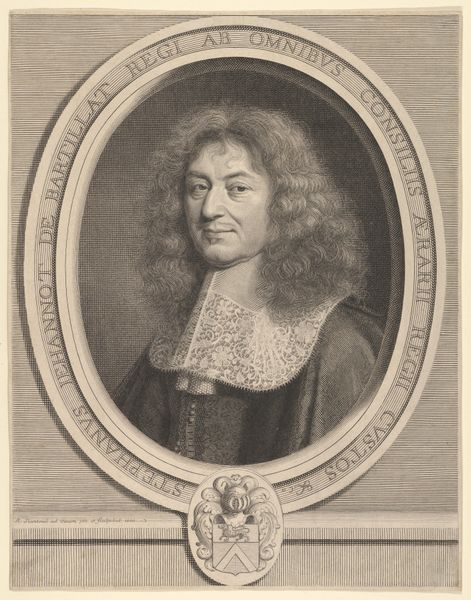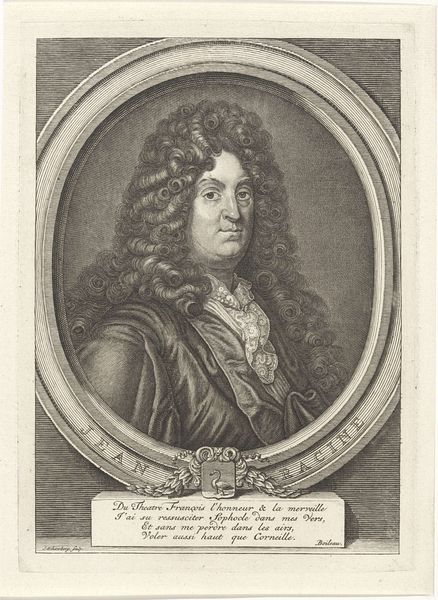
print, engraving
#
portrait
#
baroque
# print
#
line
#
14_17th-century
#
engraving
Dimensions: height 465 mm, width 387 mm
Copyright: Rijks Museum: Open Domain
Editor: Here we have Robert Nanteuil’s “Portret van Jean le Camus,” created in 1674. It's an engraving, giving it this amazing linear quality. What strikes me most is the framing, how the text integrates so directly into the design. How do you read this portrait through its historical context? Curator: This portrait, seen through a historical lens, speaks volumes about the societal role of imagery and power. Consider Nanteuil himself, a celebrated engraver catering to the elite. This wasn't simply about likeness; it was about crafting a public image. How do you think the choice of engraving, a reproducible medium, affects its meaning? Editor: It suggests widespread dissemination and perhaps control over his representation, making it more like an official statement. Curator: Precisely! Now, observe the Latin inscription. "Counsellor to the King." These aren't just decorative elements; they are strategic tools solidifying Le Camus' status. The portrait participates in constructing and reinforcing his social standing. How does that compare to portraiture today, in your opinion? Editor: We've moved away from such direct declarations of status. Now, it is often about subtle signals, curated online identities instead of commissioned engravings. What surprises me is that in modern day social media, an influencer or a regular individual has greater control over their personal imagery versus that of someone with great importance during the baroque period, which seems counter-intuitive. Curator: Yes, the control and context have completely shifted. In this work, Nanteuil presents us not only with a likeness, but with a carefully constructed persona meant for public consumption within very rigid social structures. Think about who would have owned such a print and where they might display it. Editor: It becomes a symbol, a political artifact in its own right. I hadn’t considered how active the piece is, politically, simply by existing and being disseminated. Curator: Exactly. By studying these historical portraits, we gain insights into how societies have used imagery to negotiate power and shape public perception. Editor: This gives me a completely new perspective, thanks! It makes you realize that this image says much more than simply that someone looked like Jean le Camus.
Comments
No comments
Be the first to comment and join the conversation on the ultimate creative platform.
